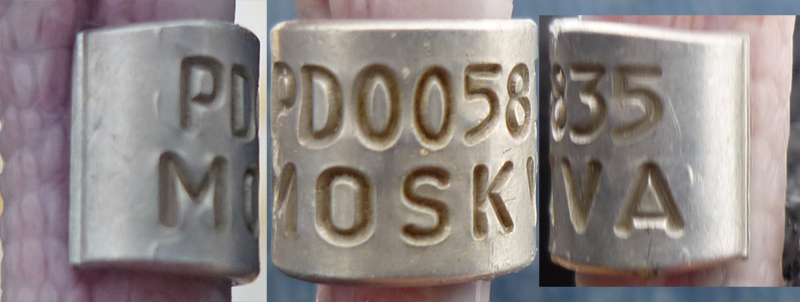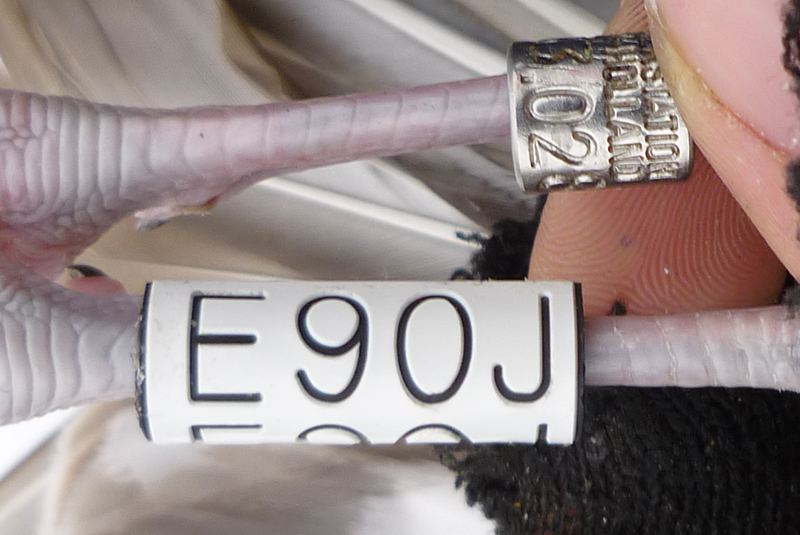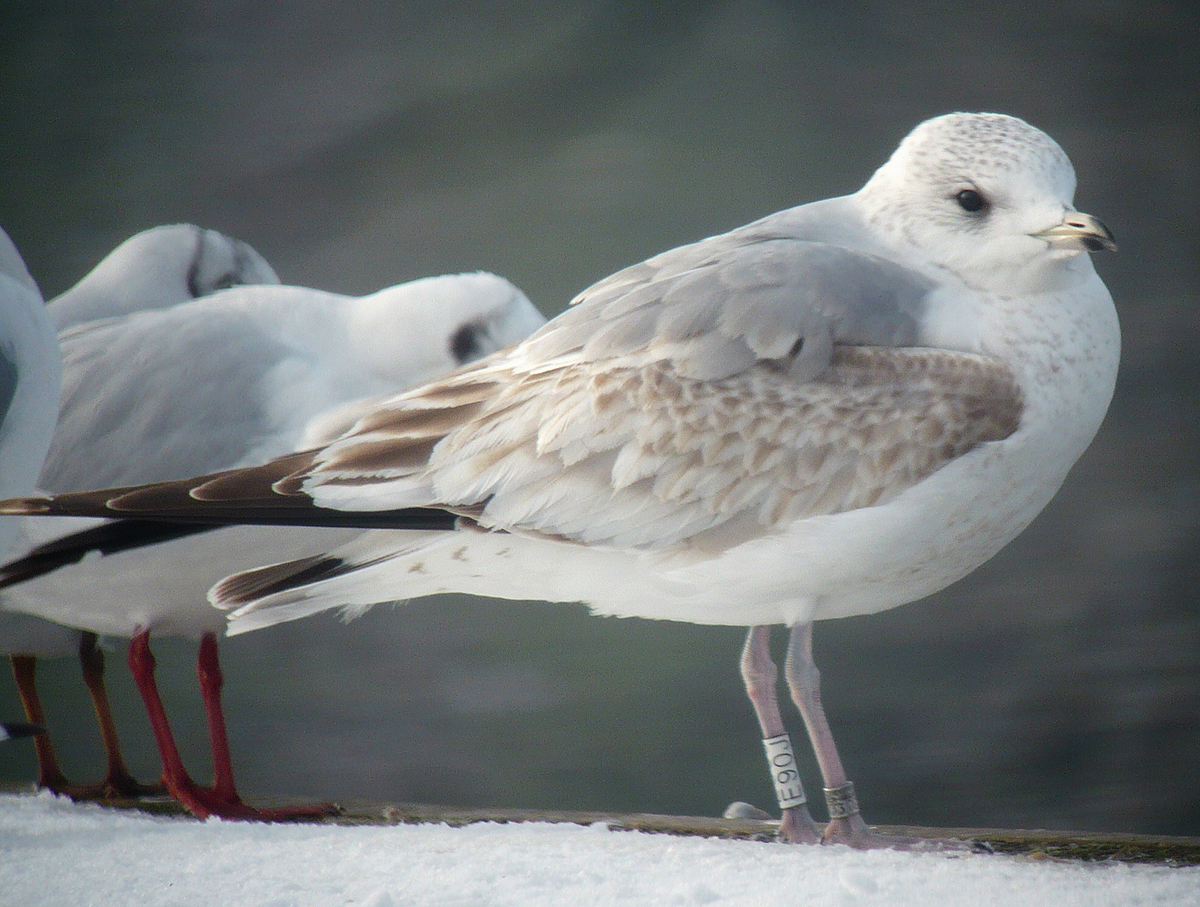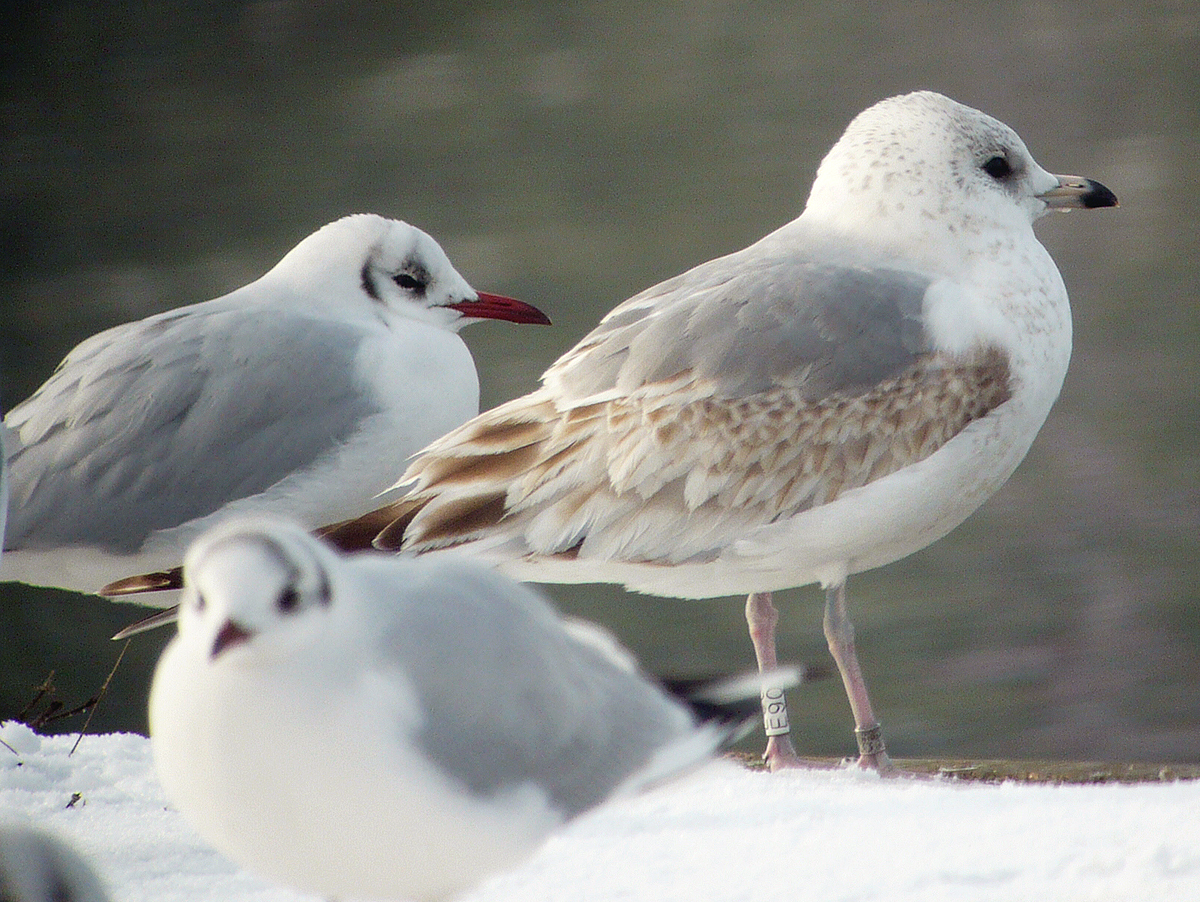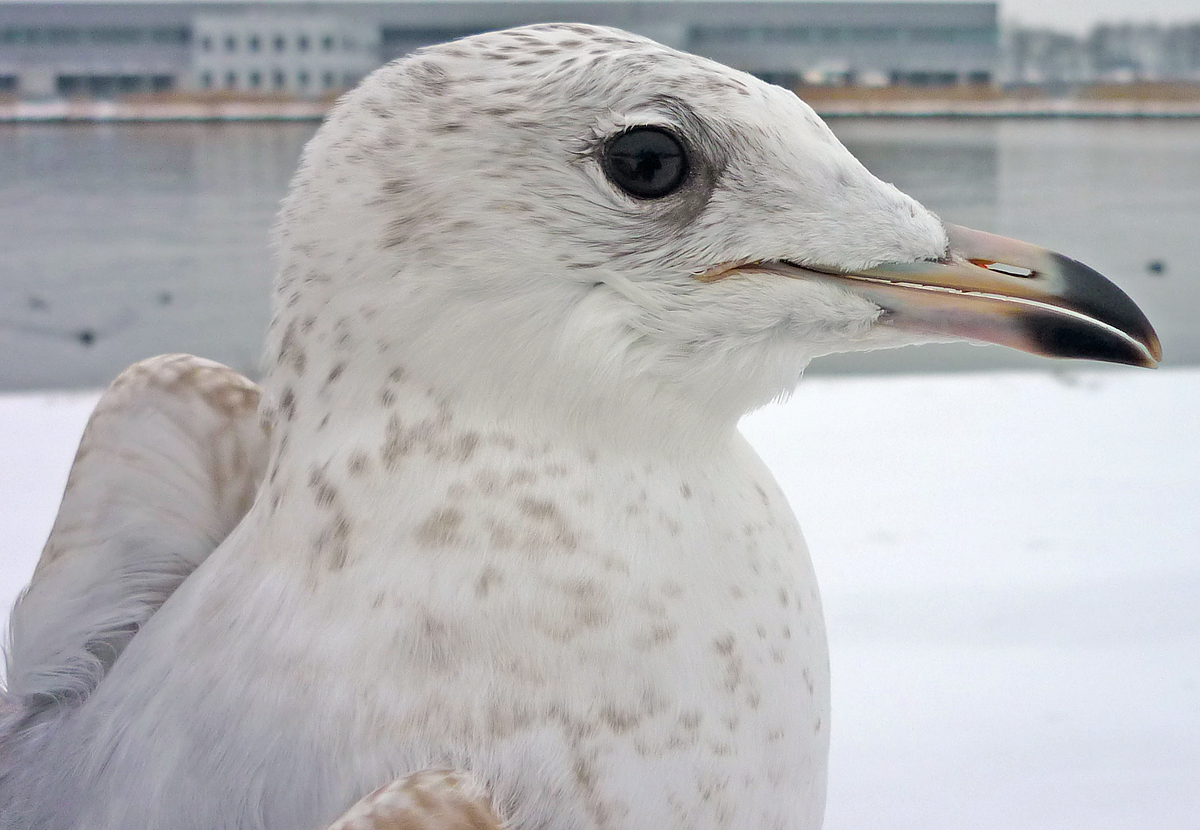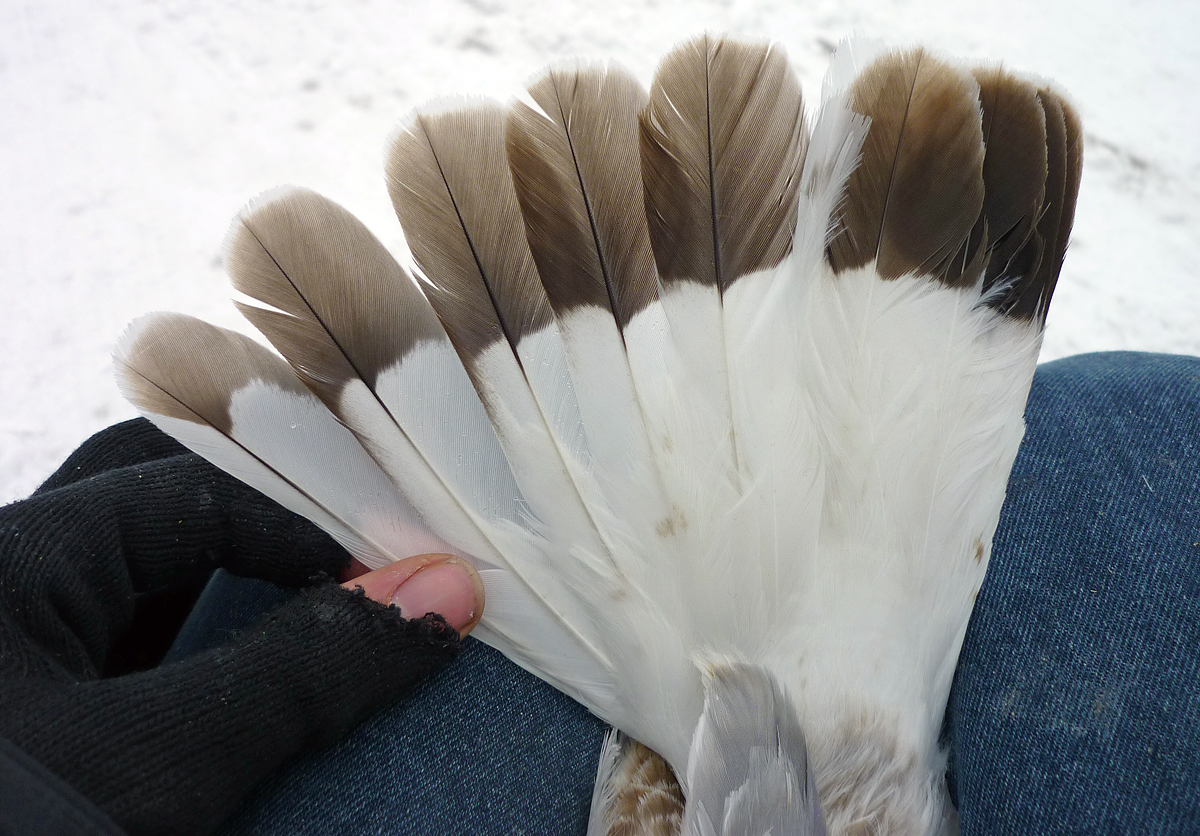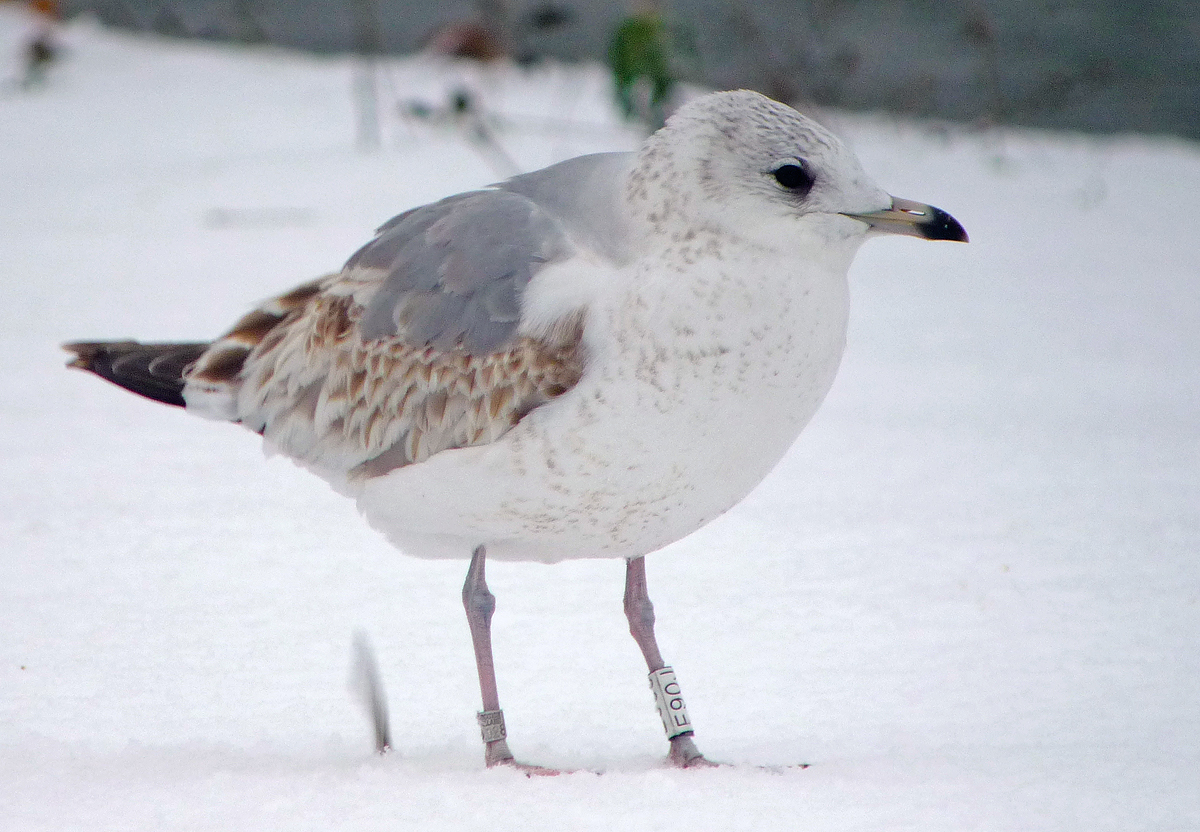 Mew Gull Larus canus canus; heinei; kamtschatschensis; brachyrhynchus
Mew Gull Larus canus canus; heinei; kamtschatschensis; brachyrhynchus
(last update: March 12, 2012)
Mew Gull heinei E90J 1st cycle (2CY), January 21 & 23 2013, Weert, The Netherlands. Picture: Jeroen Nagtegaal & Ivo Meeuwissen.
Ringed as pullus RUM PD005835 on May 30 2012 at island Turenets, river Kama in district Ilinskiy (Perm Oblast), Russia (58.35 N 56.01 E).
FINDING DATA:
21.01.2013 Industriekade, Weert, the Netherlands (51.15 N 5.40 E).
DETAILS:
caught, released with new ring NLA
Arnhem 3.733.028 + E90J white
Wing: 386mm Tarsus 59.7mm Head-Bill 97.6mm Heightbill 11.4mm
Distance travelled: 3258 KM.
Identification in the field between ssp canus and ssp heinei is not easy, and problems increase by intermediate birds from the clinal zone in western Russia. Subbtle characters in 1st winter / 1st cycle heinei are:
- Preferable bill with clear cut black tip. The base of the bill is often rich pink, and may turn yellowish in some 1st cycle birds.
- Preferable clean white head, with dark limited as small mask around the eye. But head streaking can occur (hence only soft ID criterium).
- Like in many Asian taxa, there is streaking concentrated in the hindneck, like a 'boa', which is clear cut on the nape in classic birds.
- Many birds ((75%) have scapulars replaced for grey 2nd gen feathers (in Georgia and Istanbul sample). In the grey saddle, two elements: a) old 2nd gen feathers often show dark shaft streaks or dark central arrows, and b) older scaps get paler fringes resulting in a weak scalloped pattern. Due to these two elements, the grey saddle hardly looks like a homogeneous grey area. The rear lower scaps are often still juvenile in late winter.
- Within the heinei population, some birds show chocolate brown upperwing, including the greater coverts. Such 'choco birds' also have brown underwings, clearly demarcated from the clean white flanks.
- The underwing in heinei can appear very contrasting; white toned with sharp blackish crescents on the covert tips creating neat rows. Some birds have the underwing entirely whitish.
- Preferable, heinei is very clean white on underparts: flanks, undertail coverts, and rump are white.
- White tail with black band of variable size.
- Some 1st cycle heinei have the legs already turning yellowish / pale.
